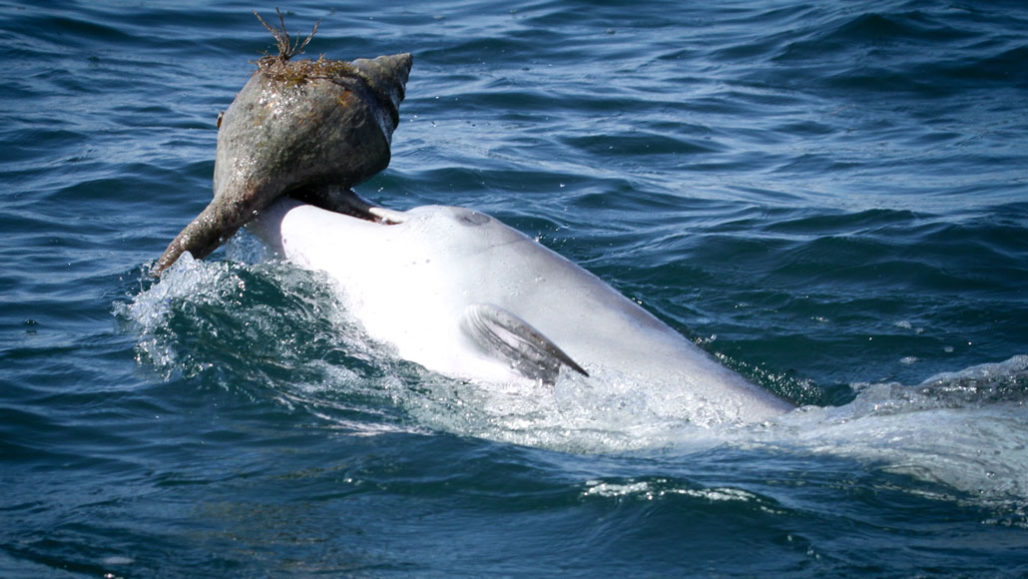Dolphins can learn from their peers how to use shells as tools
This marine mammal takes lessons on how to hunt from mom, but not always, a study suggests

Some bottlenose dolphins in Australia’s Shark Bay use shells to collect lunch. A dolphin will trap underwater prey in large sea snail shells. It then carries the shell to the surface and shakes the contents into its mouth.
S. Wild/Dolphin Innovation Project
By Jack J. Lee
For some bottlenose dolphins, finding a meal may be about who you know.
Dolphins often learn how to hunt from their mothers. But Indo-Pacific bottlenose dolphins in Western Australia’s Shark Bay are different. Some may pick up one clever foraging behavior from their peers. Researchers argue this in a report published online June 25 in Current Biology.

Educators and Parents, Sign Up for The Cheat Sheet
Weekly updates to help you use Science News Explores in the learning environment
Thank you for signing up!
There was a problem signing you up.
Previous studies had suggested dolphins can learn from peers. But the new report is the first to quantify the importance of social networks over other factors, says Sonja Wild. She’s a behavioral ecologist at the University of Konstanz in Germany.
Cetaceans include dolphins, whales and porpoises. They are known for using clever tactics to round up meals. Humpback whales off Alaska sometimes use their fins and circular bubble nets to catch fish. Indo-Pacific bottlenose dolphins in Shark Bay employ another tactic. They use sea sponges to protect their beaks while rooting for food on the seafloor. The animals learn the sponge trick from their moms.
Some Shark Bay dolphins also use a more unusual tool-based foraging method. It’s known as shelling. A dolphin will first trap underwater prey in the large shell of a sea snail. Then the dolphin pokes its beak into the shell’s opening. It can now lift the shell above the water’s surface to shake the contents into its mouth.
“It is pretty mind-blowing,” says Wild. She studied these dolphins while a graduate student at the University of Leeds in England. This brief behavior appears to be rare. From 2007 to 2018, Wild and her colleagues documented 5,278 dolphin group encounters in the western gulf of Shark Bay. There were only 42 shelling events. Only 19 dolphins exhibited the behavior.
The researchers then analyzed the behavior of 310 dolphins that had been seen at least 11 times. These included 15 shellers. They mapped the dolphins’ network of social interactions. Those interactions explained shelling’s spread better than other factors. This included genetic relatedness and the amount of environmental overlap between dolphins.
Wild likens the learning of this behavior to the spread of a virus. “Just by spending time with each other, [dolphins] are more likely to transmit those behaviors,” she says. The researchers estimate that 57 percent of the dolphins learned shelling from peers rather than on their own.
But the researchers may be too quick to dismiss the influence of the dolphins’ environment and what they learn from mom, says Janet Mann. She’s a biologist at Georgetown University in Washington, D.C. She, too, studies dolphin behavior at Shark Bay.
“Those shells are found in particular habitats. And animals who overlap in those habitats would have access to those shells.” She adds that they would “also bump into each other more often.” A dolphin’s shelling behavior could also have been influenced during the long time the animal spent with its mother.
No question, she says, “Dolphins are smart: They watch each other and see what others do.”







